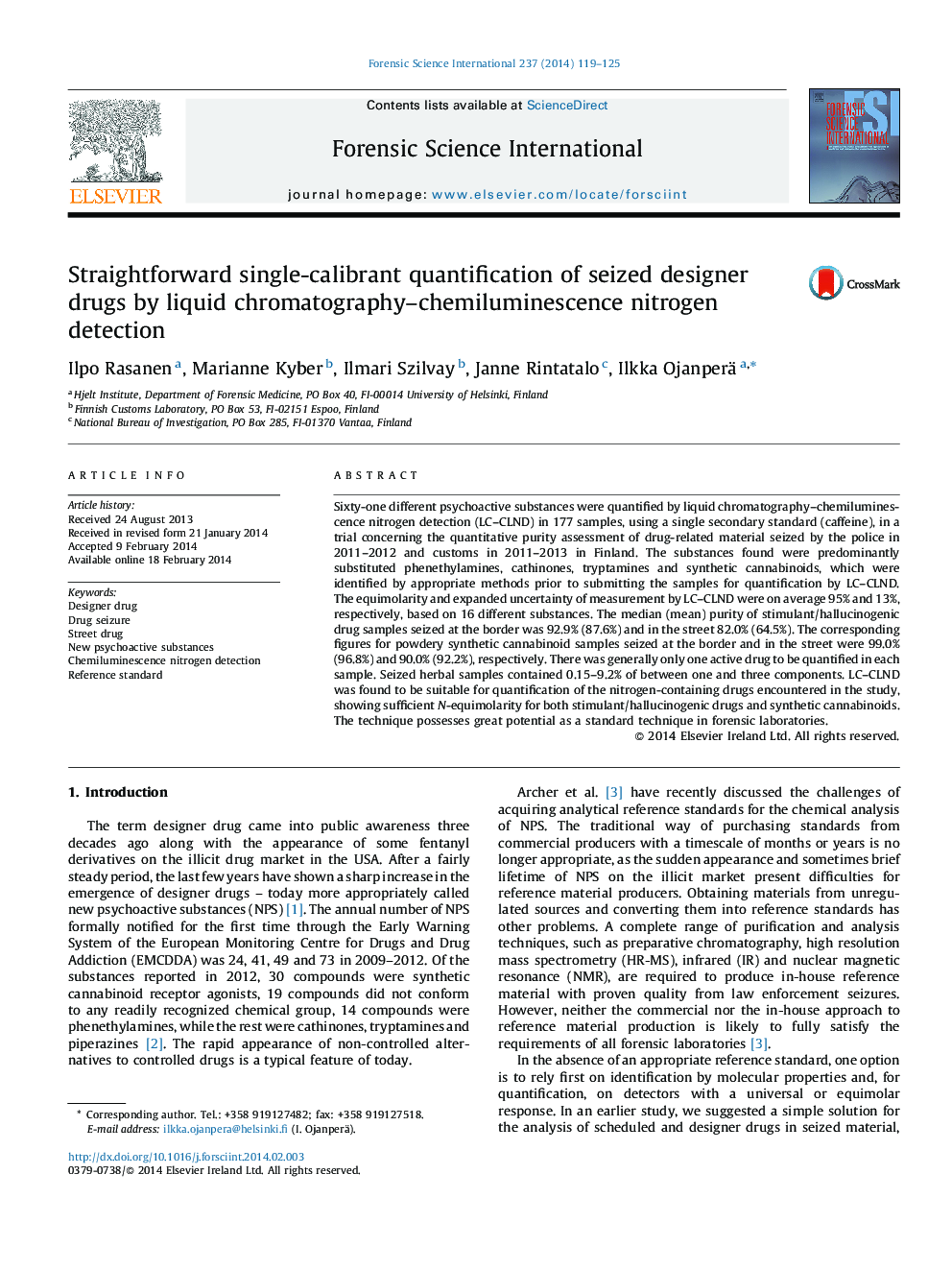| Article ID | Journal | Published Year | Pages | File Type |
|---|---|---|---|---|
| 95790 | Forensic Science International | 2014 | 7 Pages |
Sixty-one different psychoactive substances were quantified by liquid chromatography–chemiluminescence nitrogen detection (LC–CLND) in 177 samples, using a single secondary standard (caffeine), in a trial concerning the quantitative purity assessment of drug-related material seized by the police in 2011–2012 and customs in 2011–2013 in Finland. The substances found were predominantly substituted phenethylamines, cathinones, tryptamines and synthetic cannabinoids, which were identified by appropriate methods prior to submitting the samples for quantification by LC–CLND. The equimolarity and expanded uncertainty of measurement by LC–CLND were on average 95% and 13%, respectively, based on 16 different substances. The median (mean) purity of stimulant/hallucinogenic drug samples seized at the border was 92.9% (87.6%) and in the street 82.0% (64.5%). The corresponding figures for powdery synthetic cannabinoid samples seized at the border and in the street were 99.0% (96.8%) and 90.0% (92.2%), respectively. There was generally only one active drug to be quantified in each sample. Seized herbal samples contained 0.15–9.2% of between one and three components. LC–CLND was found to be suitable for quantification of the nitrogen-containing drugs encountered in the study, showing sufficient N-equimolarity for both stimulant/hallucinogenic drugs and synthetic cannabinoids. The technique possesses great potential as a standard technique in forensic laboratories.
